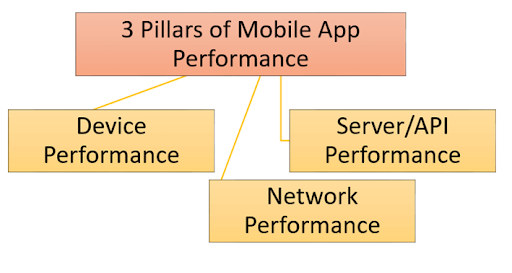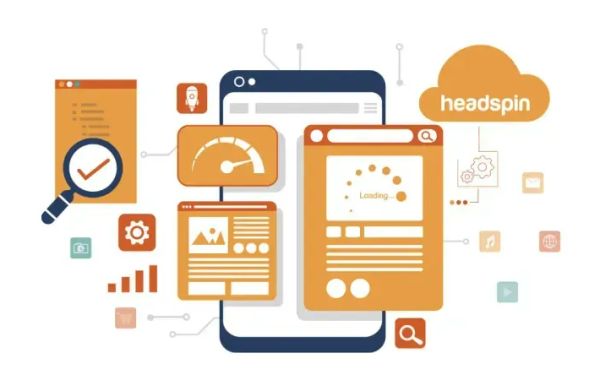In today's digital age, having a high-performing web and mobile application is crucial for the success of any business. Optimizing performance in web apps is essential to ensure a seamless user experience, improve customer satisfaction, and increase conversion rates.
By following best practices in app performance optimization, business owners can enhance their app's speed, efficiency, and overall performance. In this guide, we will explore the key strategies and techniques that business owners can use to optimize the performance of their web and mobile applications.
Understanding the Importance of App Performance
Imagine walking into a store and having to wait a long time just to get inside. Chances are, you would turn around and look for another place that welcomes you quicker. The same principle applies to web and mobile applications. If an app takes too long to load, users are likely to move on to another one that meets their needs faster. This is why app performance is so crucial.
When your app runs smoothly and quickly, it keeps users happy. Happy users are more likely to stick around, use your app more, and even recommend it to others. This can lead to more downloads, increased customer loyalty, and ultimately, higher revenue for your business. On the other hand, if your app is slow or crashes often, it can frustrate users, leading them to abandon your app altogether. This can hurt your brand's reputation and your bottom line.
App performance also plays a key role in how your app ranks in search results. Search engines and app stores often favor apps that provide a good user experience, which includes fast load times and responsive interactions. By optimizing your app's performance, you can improve its visibility, making it easier for potential users to find your app.
The performance of your web and mobile application is not just a technical issue; it's a business one. It affects how users perceive your brand, how much they engage with your app, and whether they decide to keep using it or not. Ensuring your app performs well is a critical step in building a successful digital product that users love and rely on.

Identifying Performance Bottlenecks Early
Finding and fixing performance bottlenecks early is like smoothing out the bumps in the road before they slow you down. These bottlenecks can be anything that makes your app run slower than it should, like a traffic jam on the internet highway. Think of your app like a car. If the engine (server response times) is slow, the car won't go fast. If the car is carrying too much weight (inefficient code), it also slows down. And if it has to stop and start again and again (excessive network requests), your journey (user experience) won't be smooth.
The trick is to catch these issues early. How? By regularly checking your app's performance. It's like taking your car for check-ups to catch problems before they get bigger. There are tools designed to help you monitor how your app is doing. These tools can spot where the traffic jams are happening and why they're happening. This way, you can fix them before your users even notice something's wrong.
Imagine you're planning the best route for a road trip. You wouldn't want to get stuck in traffic or take a longer route than necessary, right? It's the same with your app. By finding and fixing these bottlenecks early, you're making sure that your app takes the fastest route possible, every time.
This keeps your users happy because they get where they're going quickly and without hassle. And when your users are happy, they're more likely to stick around. So, keeping an eye on performance early on isn't just about avoiding problems; it's about paving the way for a smooth, enjoyable journey for everyone.
Optimizing Your App's Load Time
When it comes to keeping your users happy and engaged, the speed at which your app loads is a game-changer. Imagine if every time users opened your app, they had to wait what felt like forever for it to load. Frustration would kick in, and they might just decide to look elsewhere. That's why optimizing your app's load time is crucial. It's all about making sure that from the moment a user taps on your app, they're swiftly moved to where they want to go.
- First off, let's talk about cleaning up your code. By getting rid of any unnecessary characters in your app’s code - think spaces, line breaks, and comments - you make your app lighter and faster. This process, known as code minification, can significantly reduce your app's load time.
- Next up is image optimization. High-quality images can make your app look great, but they can also slow it down. The trick is to strike a balance. Use the right file format and compress images so they're easy on your app's load time without losing their appeal.
- Another technique is asynchronous loading. This means not everything on your app has to load at the same time. By prioritizing the loading of key elements first, your users can start interacting with your app sooner while the rest of the content catches up.
These techniques don’t require a tech genius to implement but can have a big impact on your app’s performance. By focusing on speeding up your app's load time, you're not just improving its performance; you're also boosting user satisfaction and setting the stage for better engagement and retention. After all, in the digital world, every second counts.
Streamlining Backend Interactions
Streamlining backend interactions is like ensuring all the parts of a machine work together perfectly for a smooth operation. For any app, the backend is where a lot of the action happens. It's where the app's data is processed, stored, and retrieved. Making this process as efficient as possible is key to fast and reliable app performance.
- One way to achieve this is by optimizing database queries. This means making sure that when your app asks for data, it does so in the most efficient way. Imagine asking a group of people to find a book in a library. If you give them a clear, precise description, they’ll find it faster. Similarly, well-structured queries help your app retrieve data more quickly.
- Reducing network latency is another crucial step. Latency is the delay before a transfer of data begins following an instruction for its transfer. It’s like the time it takes for you to hear a response after calling out to someone. The goal is to make this time as short as possible. Techniques like using a content delivery network (CDN) can bring data closer to your users, speeding up the time it takes for them to access the information.
- Caching data is also a game-changer. It allows frequently accessed data to be stored temporarily in a place that’s quick to access. Think of it like keeping your most-used tools on top of your desk instead of in a drawer. This way, your app can quickly grab this data without having to go through the longer process of retrieving it from the main database every time.
By focusing on these areas, businesses can make their backend processes run more smoothly. This not only speeds up the app for users but also can lead to more efficient use of resources, ultimately supporting a better overall experience.
Emphasizing Mobile User Experience
In the world where smartphones are an extension of ourselves, creating a mobile app that users love is key. People use apps on the go, so they expect them to be fast, smooth, and easy to navigate. A great mobile user experience (UX) can make the difference between an app that's a hit and one that's quickly forgotten.
- To get this right, focus on designing your app with mobile users in mind from the start. The layout should be simple and intuitive. Big buttons, easy-to-read text, and quick access to key features are all must-haves. Remember, a thumb is often the only tool used to navigate through an app, so design with this in mind.
- Also, pay attention to load times. Mobile users are especially impatient. They might be trying to access your app while catching a bus or during a quick coffee break. This means every second your app takes to load counts. Optimize images, streamline code, and consider what content loads first to keep these times short.
- Responsive design is another crucial element. Your app should look and work great across a variety of devices and screen sizes. Users might switch between devices, and a seamless experience can encourage them to keep engaging with your app.
- Lastly, don’t forget to test your app on actual devices in real-world conditions. What works in a test environment might not hold up in a busy street or a dimly lit room. User feedback is invaluable here. It can highlight issues you might not have considered and suggest improvements that could enhance the mobile experience.
By prioritizing these elements, you ensure your app meets the high expectations of today's mobile users, fostering satisfaction and loyalty.
Struggling with slow web and mobile app performance? Partner with Hidden Brains, the top web app development company in India, to optimize your applications today!
Employing Efficient Coding Practices
Writing clean and straightforward code is like keeping a tidy room; it makes finding what you need easier and improves overall efficiency. Efficient coding practices are key to making web and mobile apps run faster and smoother. This means your app can do its job without unnecessary delays, making users happy and more likely to keep using it.
- First up, let's talk about optimizing your code. This involves streamlining your app's instructions to do more with less. It's like packing a suitcase; if you fold everything neatly and only take what you need, you'll have a much easier time finding your clothes when you reach your destination. For coding, this might mean getting rid of redundant code or using simpler methods to achieve the same outcome.
- Next is code splitting. This technique separates your app's code into smaller, bite-sized pieces, so users only load what they need, when they need it. Imagine a library that only brings you the books you ask for, rather than making you walk through every aisle. This way, your app can start up faster because it’s not weighed down by unnecessary data.
- Lastly, there's lazy loading. This is a bit like waiting to turn on lights in a room until you actually walk into it. Instead of loading every part of your app at once, lazy loading waits to load certain elements until they're needed. This reduces initial load time and saves resources, making for a smoother experience right from the start.
By focusing on these efficient coding practices, you're not just tidying up your code; you're paving the way for a faster, more reliable app. This can lead to better user experiences, and in the digital world, that’s always a win.
Leveraging Browser Caching and Compression
Think of a time when you visited a favorite website and it opened up super quickly. That's often because of something called browser caching. Browser caching is a smart way to store some parts of a website or app right on your device. So, the next time you visit, your device doesn't have to ask the internet for everything again. It's like keeping a box of your favorite snacks at home; you don't have to go to the store every time you want one.
Now, let's add compression into the mix. Imagine if you could make those snacks smaller without losing any of their taste, so you could fit more into the same box. That's what compression does for web and mobile apps. It squishes the data into smaller bits without losing the quality. When your app sends over these smaller, compressed files, it doesn't take as long. Your users get what they want faster, which makes them happy.
Using browser caching and compression together is like having a magic combination. You're not only making things faster for your users by storing data locally, but you're also making the data smaller so it travels quickly from your server to the user's device. It’s a win-win. Your app feels faster and smoother, and you don't have to work as hard to send data back and forth.
By focusing on these two techniques, you're taking big steps toward making your app more enjoyable to use. And in the busy online world, giving users a quick and smooth experience can really help your app stand out from the crowd.
Ensuring Security Without Sacrificing Performance
When it comes to the digital world, making sure your web and mobile apps are secure is just as important as how fast they run. But here’s the good news: you don’t have to choose between security and performance. You can have both!
Think of it like locking your doors at night. You wouldn’t leave your doors unlocked just because you don’t want to spend a few extra seconds locking them, right? The same goes for app security. With smart practices, you can keep your app’s doors locked tight without slowing down its speed.
- First off, let’s talk about secure coding. This means writing your app’s code in a way that keeps hackers out from the get-go. It’s like building a house with strong locks and windows that can’t be easily broken into.
- Then there’s HTTPS - the ‘S’ stands for secure. By using HTTPS instead of HTTP, any information sent between your app and your users is encrypted. It’s like sending your mail in a locked box instead of an open envelope. Even if someone gets their hands on it, they can’t see what’s inside.
- And don’t forget about keeping your app up-to-date. Just like you’d fix a broken lock at home, regularly updating your app patches up any security holes that hackers might try to sneak through.
All these steps are like pieces of armor for your app, protecting it without weighing it down. By focusing on secure coding, using HTTPS, and staying up-to-date, you make your app a fortress that’s still fast and welcoming for your users. No need to compromise speed for security when you can ace both!
Regular Performance Testing
Think of your app like a car that you drive every day. Just as you'd regularly check your car to make sure it's running smoothly, regular performance testing is like giving your app a check-up to ensure it's performing at its best. This isn't just a one-time task but an ongoing process that keeps your app in top shape, providing a great experience for your users.
Performance testing comes in various forms, each serving a specific purpose. Load testing, for example, is like seeing how your car handles a long road trip with a full load of passengers and luggage. It tests how your app behaves under the heavy use it will see during peak times. Stress testing, on the other hand, is like pushing your car to its limits to see at what point it starts to struggle. This helps you understand the maximum capacity of your app and how it responds under extreme conditions.
Real user monitoring gives you insights into how actual users are interacting with your app in the real world. It's akin to having a dashcam in your car, recording how it performs on different roads and under various conditions. This real-world feedback is invaluable for making targeted improvements.
By incorporating these testing strategies into your routine, you're not just fixing issues as they arise. You're proactively tuning and tweaking your app to handle whatever comes its way. This commitment to regular performance testing ensures your app remains reliable, responsive, and ready to serve your users' needs, keeping them happy and engaged.
Keeping Up With Technology and Trends
In the fast-paced world of app development, staying current with technology and trends is not just beneficial; it's essential. Technology evolves rapidly, and what was cutting-edge yesterday might become obsolete tomorrow. For instance, progressive web apps (PWAs) are reshaping how users interact with mobile and web applications by offering app-like experiences directly from a web browser, without the need for downloading. They are fast, reliable, and capable of working offline, making them a popular choice for improving user engagement.
Similarly, accelerated mobile pages (AMPs) are making waves by dramatically speeding up load times for mobile users. In an era where speed is of the essence, implementing AMP can be a game-changer for businesses aiming to capture and retain the attention of mobile users.
Then there's serverless architecture, a revolutionary approach that allows developers to build and run applications without managing servers. This not only reduces overhead but also scales automatically to meet demand, ensuring that apps can handle peaks in user traffic without a hitch.
By embracing these technologies, businesses can not only stay ahead of the curve but also ensure their applications meet modern user expectations for speed, reliability, and functionality. The key is to keep an ear to the ground for emerging technologies and trends, continuously evaluating and integrating those that align with your app's goals and user needs. This proactive approach to technology adoption can be the difference between leading the pack and lagging behind.
Are you facing performance issues with your web and mobile apps? Partner with Hidden Brains, the top mobile app development company in India, to optimize your app performance today!
Choosing the Right Development Partner
Finding a good team to create your app is like picking the right crew for a ship. You need skilled, reliable people who know how to navigate the waters and get you safely to your destination. When you're on the lookout for a software development company, think about what you really need. Do they understand your vision? Can they make an app that not only works well but is also safe and can grow with your business?
It's important to choose a partner with a strong track record. Look for a team with experience in building the kind of app you want, and don't be shy about asking for examples of their work. A good partner will be proud to show off what they've made and will be happy to explain how they can help your app succeed.
Also, think about communication. Building an app is a journey you'll take together, so finding a team you can talk to easily is key. They should listen to your ideas, explain things in a way you understand, and keep you updated.
Remember, the right partner is out there. With a bit of research and some smart questions, you can find a team that will help your app shine.








